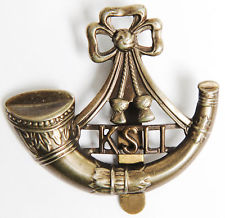Personal Details
Born: 1881 in Whitchurch, Shropshire and baptised 23 December 1881 at St. Alkmund`s Parish Church, Whitchurch.
Family: He was the fourth of five children born to Morris Thomas, a labourer, and his wife Fanny. He married Dora Harding in 1910 in Runcorn, Cheshire. The couple had a daughter Frances M, born 1914 in Whitchurch.
Residence: From the time of his baptism in 1881 until at least 1901 Richard and his family were living in Claypit Street, Whitchurch. In 1911 he and his wife were visitors at 4 Claypit Street Terrace (the home of his sister, Hannah), Whitchurch. His pension ledger card and the 1919 Absent Voters` List gave an address of Bargates Cottages, Whitchurch for him.
Employment: In 1901 he was a shoemaker`s labourer but in 1911 he was a gardener.
Died: Not known
Military Details
Regiment: King`s Shropshire Light Infantry
Rank: Private
Service Number: 24903
Date of Enlistment: 28 November 1915
Date of Discharge: 2 June 1919
Reason for Discharge: Surplus to military requirements having suffered impairment since entry into the service. Suffered a gunshot wound to his arm and spent time in the Surgical Home, Baschurch, Shropshire before being discharged.
Richard was awarded the Campaign Medals (British War Medal and Victory Medal) and Silver War Badge (number B228114, awarded 12 July 1919).

The British War Medal (also known as 'Squeak') was a silver or bronze medal awarded to officers and men of the British and Imperial Forces who either entered a theatre of war or entered service overseas between 5th August 1914 and 11th November 1918 inclusive. This was later extended to services in Russia, Siberia and some other areas in 1919 and 1920. Approximately 6.5 million British War Medals were issued. Approximately 6.4 million of these were the silver versions of this medal. Around 110,000 of a bronze version were issued mainly to Chinese, Maltese and Indian Labour Corps. The front (obv or obverse) of the medal depicts the head of George V. The recipient's service number, rank, name and unit was impressed on the rim.
The Allied Victory Medal (also known as 'Wilfred') was issued by each of the allies. It was decided that each of the allies should each issue their own bronze victory medal with a similar design, similar equivalent wording and identical ribbon. The British medal was designed by W. McMillan. The front depicts a winged classical figure representing victory. Approximately 5.7 million victory medals were issued. Interestingly, eligibility for this medal was more restrictive and not everyone who received the British War Medal ('Squeak') also received the Victory Medal ('Wilfred'). However, in general, all recipients of 'Wilfred' also received 'Squeak' and all recipients of The 1914 Star or The 1914/1915 Star (also known as 'Pip') also received both 'Squeak' and 'Wilfred'. The recipient's service number, rank, name and unit was impressed on the rim.

The Silver War Badge was issued in the United Kingdom and the British Empire to service personnel who had been honourably discharged due to wounds or sickness from military service in World War I. The badge, sometimes known as the "Discharge Badge", the "Wound Badge" or "Services Rendered Badge", was first issued in September 1916, along with an official certificate of entitlement.

